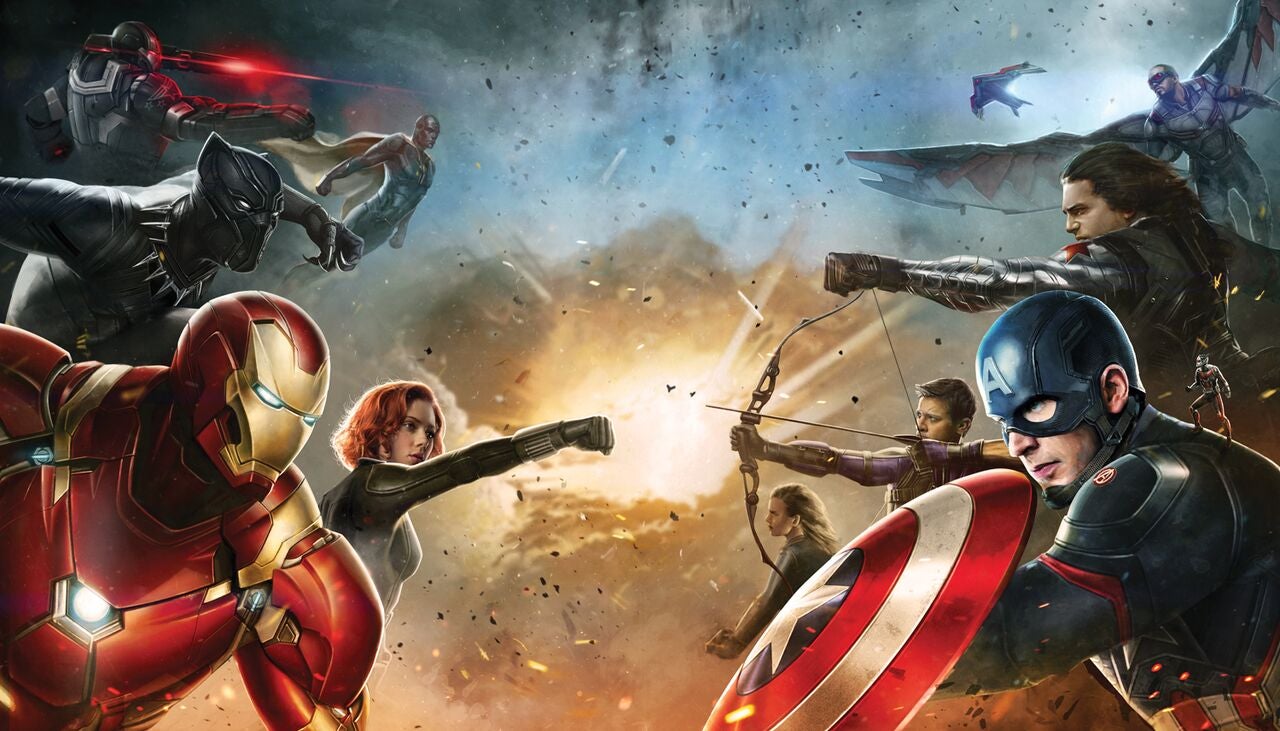Why you'll never see the X-Men and the Avengers sharing a screen
The X-Men and the Avengers can appear in the same magazine but not the same film. Spiderman can only meet Captain America with Sony’s permission. After five decades, the world of special powers is fraught with personal issues

Fans of superhero movies might end up a little confused, if they go to the cinema to watch the two biggest men-in-tights movies on general release this month.
In Captain America: Civil War, the latest Marvel blockbuster featuring the likes of Iron Man, Black Widow and Ant-Man going hammer-and-tongs at each other, there’s a young chap with super-speed powers who goes by the codename of Quicksilver. In X-Men: Apocalypse, which has a special global “fan premiere” tonight in London, there’s also a young chap with super-speed powers called Quicksilver.
Though played by different actors – Evan Peter in X-Men and Aaron Taylor-Johnson in Captain America – this is essentially the same character, from the same Marvel Comics. And therein lies a rather intriguing state of affairs in which, while the Avengers (Captain America, Iron Man, the Hulk etc) and the X-Men (Cyclops, Storm, Wolverine) have lived in the same comic book world for 50-odd years, a tangled web of licensing deals means the twain shall never meet in our multiplexes.
Speaking of webs – if you’ve seen Civil War yet, you’ll know that another veteran Marvel character – Spider-Man, makes an appearance – which had fandom practically wetting itself when his presence was revealed in the pre-release trailer. Why? Because of the same convoluted set of licensing deals. Practically all the Marvel heroes you can name were developed by Stan Lee and his various artistic collaborators – Jack Kirby and Steve Ditko chief among them – to create the Marvel Universe. The first issues of The Uncanny X-Men and The Avengers comics both debuted in September 1963; Spider-Man a little over a year earlier in the anthology comic Amazing Fantasy.
As the years progressed, a cohesive Marvel Universe was established, where Spider-Man lived in the same New York as Daredevil and the Avengers, and characters would pop up in each other’s comic books. However, before superheroes first started their proper assault on the cinema in the early part of this century, Marvel’s licensing department hadn’t been quite as continuity-minded as the comics’ editors. That’s because while today Marvel’s collective superpower seems to be a license to print money, in the mid-90s things were very different – to the point where in 1996 Marvel had to file for bankruptcy protection to stop the company going under. As a result, a lot of their properties were sold off to various studios. Fox got its hands on the X-Men, always one of Marvel’s most lucrative franchises, and the Fantastic Four, the comic book that kicked off the Marvel age in 1961. Spider-Man went to Sony.
In the early 2000s, these characters made their way into the cinema: the Spider-Man trilogy starring Tobey Maguire from Sony, as well as Fox’s original X-Men trilogy with Patrick Stewart and Ian McKellen, plus a not-so well received Fantastic Four movie, and a Daredevil film with Ben Affleck. Enter Marvel, now in better shape since being purchased by Disney. They decided they wanted to get back in the cinema game, kick-starting what became known as the Marvel Cinematic Universe – with Robert Downey Jnr’s Iron Man in 2008, swiftly followed by Captain America, Thor, the first Avengers movie, then Ant-Man, Guardians of the Galaxy and so on.
The trouble is, with superheroes continuing to tear up the box office, Fox and Sony have no plans to let go of their Marvel heroes. (Deadpool, a complete unknown outside of the comics, was another Fox-bought property and his movie starring Ryan Reynolds crushed records for an R-rated movie on release in February.) So that’s why the X-Men and the Avengers, though often rolling up their sleeves for a barney in the comics, won’t ever be seen together at your local cinema.
There is one ray of hope, though: the appearance of Spider-Man in Civil War. Marvel Studios and Sony struck a deal over Spider-Man in a football-style “free loan”. Why? Because it benefits both companies: Marvel gets to please the comic fans and Sony gets some guaranteed exposure of their character prior to his reboot in 2017.
Which brings us back to the tale of two Quicksilvers. How does he appear in Fox and Marvel movies at the same time? Well, because Quicksilver has done time with both the X-Men and the Avengers in the comics, and therefore falls into both licensing deals (albeit as rather different characters in the two current movies). And there’s a cheeky little postscript to it all, supplied by two companies in which Rupert Murdoch has interests: Sky Movies is currently using the X-Men cast – including Quicksilver – in its latest TV ads, to the refrain of Redbone’s 1974 hit “Come and Get Your Love”, which has a central soundtrack role in one of Marvel’s biggest hits, Guardians of the Galaxy. Probably the licensers’ fault.
Join our commenting forum
Join thought-provoking conversations, follow other Independent readers and see their replies
Comments